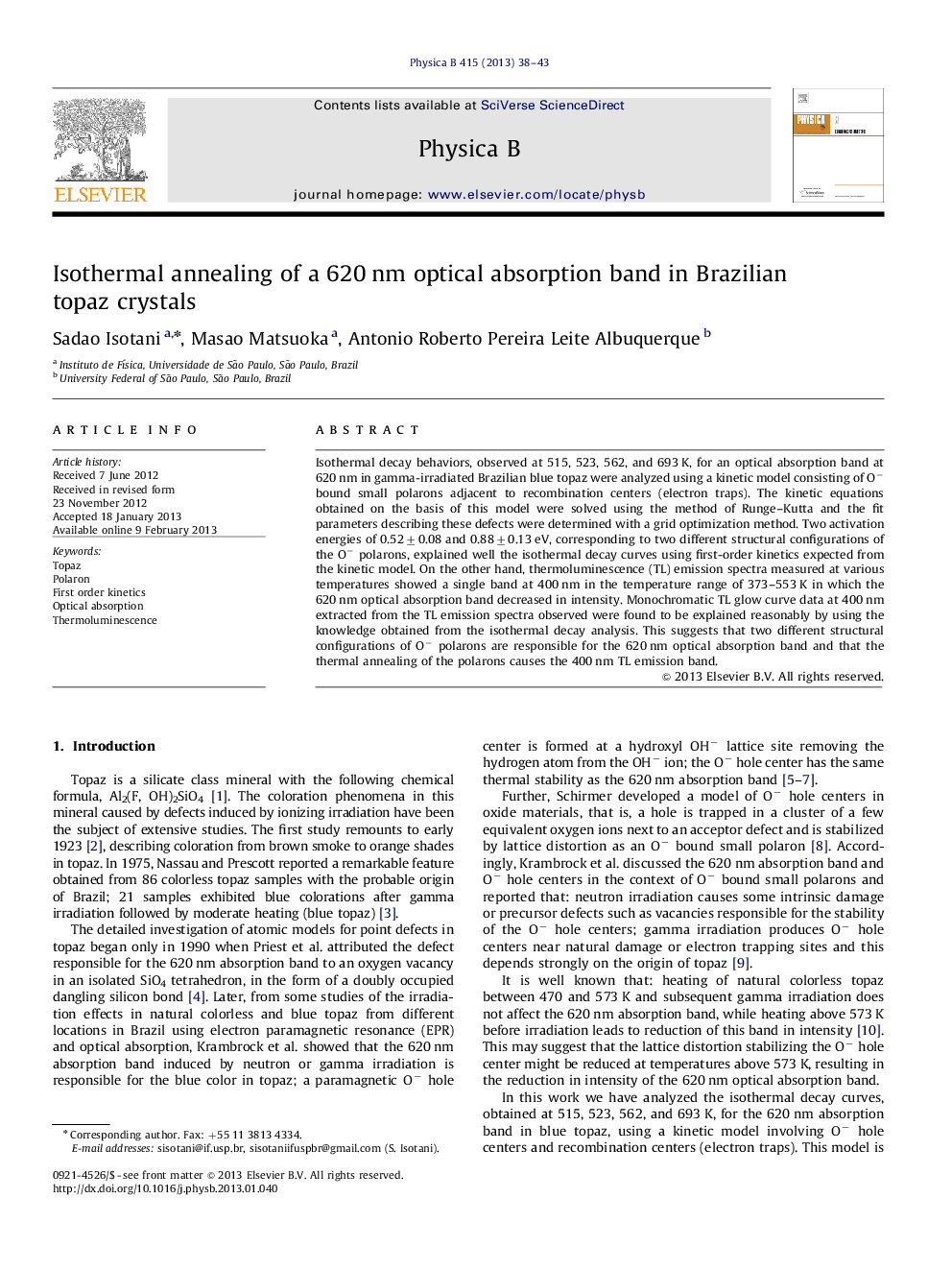| کد مقاله | کد نشریه | سال انتشار | مقاله انگلیسی | نسخه تمام متن |
|---|---|---|---|---|
| 8163483 | 1525231 | 2013 | 6 صفحه PDF | دانلود رایگان |
عنوان انگلیسی مقاله ISI
Isothermal annealing of a 620Â nm optical absorption band in Brazilian topaz crystals
دانلود مقاله + سفارش ترجمه
دانلود مقاله ISI انگلیسی
رایگان برای ایرانیان
کلمات کلیدی
موضوعات مرتبط
مهندسی و علوم پایه
فیزیک و نجوم
فیزیک ماده چگال
پیش نمایش صفحه اول مقاله

چکیده انگلیسی
Isothermal decay behaviors, observed at 515, 523, 562, and 693 K, for an optical absorption band at 620 nm in gamma-irradiated Brazilian blue topaz were analyzed using a kinetic model consisting of Oâ bound small polarons adjacent to recombination centers (electron traps). The kinetic equations obtained on the basis of this model were solved using the method of Runge-Kutta and the fit parameters describing these defects were determined with a grid optimization method. Two activation energies of 0.52±0.08 and 0.88±0.13 eV, corresponding to two different structural configurations of the Oâ polarons, explained well the isothermal decay curves using first-order kinetics expected from the kinetic model. On the other hand, thermoluminescence (TL) emission spectra measured at various temperatures showed a single band at 400 nm in the temperature range of 373-553 K in which the 620 nm optical absorption band decreased in intensity. Monochromatic TL glow curve data at 400 nm extracted from the TL emission spectra observed were found to be explained reasonably by using the knowledge obtained from the isothermal decay analysis. This suggests that two different structural configurations of Oâ polarons are responsible for the 620 nm optical absorption band and that the thermal annealing of the polarons causes the 400 nm TL emission band.
ناشر
Database: Elsevier - ScienceDirect (ساینس دایرکت)
Journal: Physica B: Condensed Matter - Volume 415, 15 April 2013, Pages 38-43
Journal: Physica B: Condensed Matter - Volume 415, 15 April 2013, Pages 38-43
نویسندگان
Sadao Isotani, Masao Matsuoka, Antonio Roberto Pereira Leite Albuquerque,